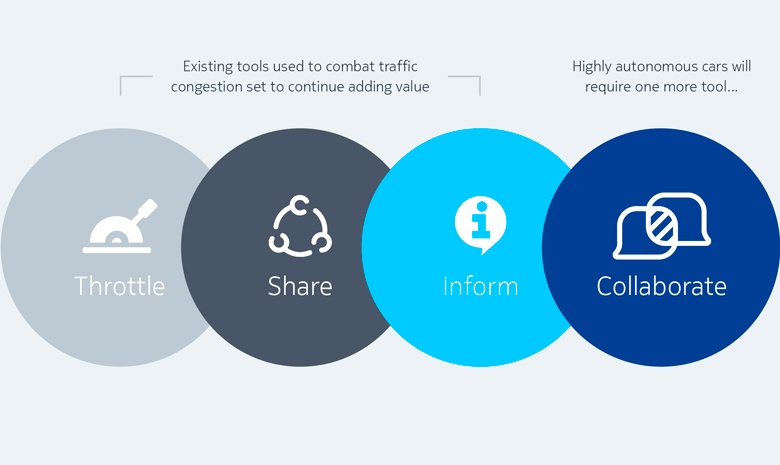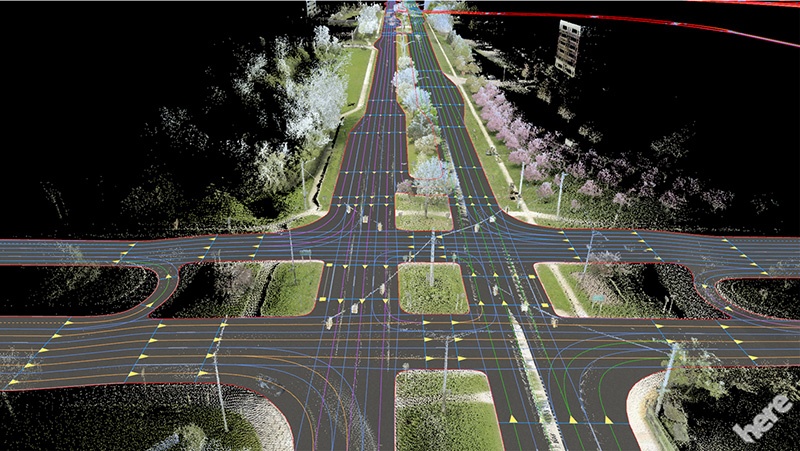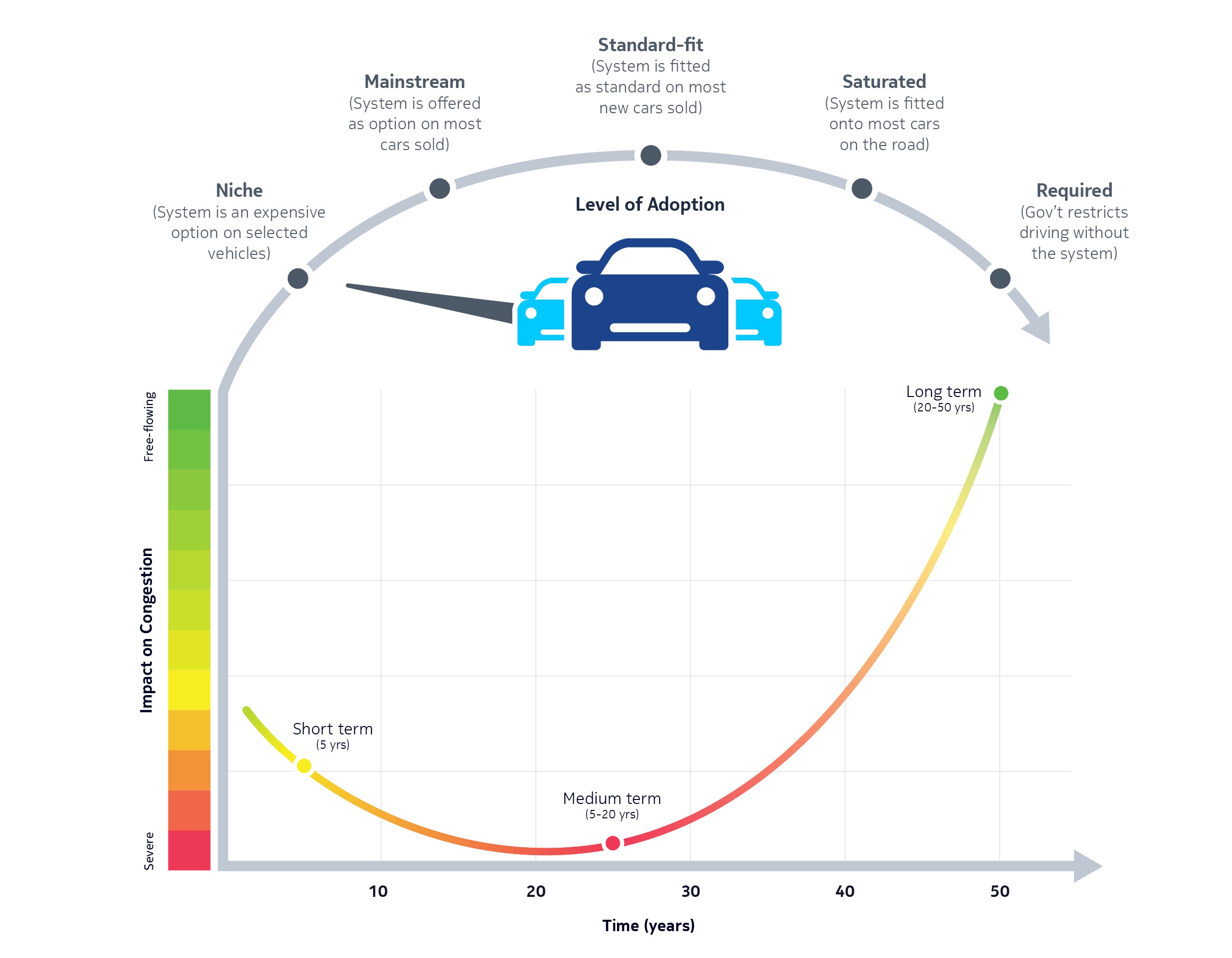Will autonomous cars really improve traffic?

The utopian vision of autonomous cars and a world where traffic issues are null is a generation away, according to a new white paper from HERE and SBD research, which also asserts that advancement in autonomous vehicles will be gridlocked without the cooperation of all stakeholders.
Relaxing and productive commutes with self-driving vehicles freely moving us around in safety and comfort will one day be the case, but introducing autonomy to the world is an iterative process that relies on sharing and connecting all aspects of the development — from data and systems to technical innovations and end users.
We spoke with co-authors of the white paper, Carrie Cox, Senior Product Marketing Manager, HERE and Andrew Hart, Director at SBD, to get an overview of the insights they shared.
Carrie points out a common misconception in the industry: that self-driving cars will make the traffic we experience today obsolete. While in the long term we should expect to see fewer accidents and, ultimately, fewer vehicles on the road, it will take some time before autonomous vehicles fully transform the way we travel.

“We believe traffic will be reduced long term — that is, a generation from now — but the traffic situation will get worse during the complex deployment process which must come first,” she says. “This is what we explored in the paper.”
For one, the sheer number of cars in the near term would increase traffic as both driverless and traditional vehicles share the road. Andrew says, “And then there's the element of driver reaction — just getting used to having self-driving cars next to you on the same highway could cause delays.”
Industry collaboration imperative
The paper outlines further stages. In the medium term (within 5-6 years), autonomous vehicles will start to have a minor impact in reducing the number of collisions and change traffic patterns.
During this time, the speed of advancement in deploying autonomous vehicles will depend on the level of cooperation between carmakers, governments, suppliers and service operators. “Collaboration is key for trust in autonomous vehicles in general,” says Andrew, “and will help bring consumers on board.”

Collaboration in the form of data sharing will also be required for progress, according to Carrie. “Right now it's all about reaching the individual driver,” she says. “Vehicle and traffic information is sitting in siloes, but must be shared with all cars on the network to benefit the greater good.”
In the long term, the utopia will be realized as the next generation sees autonomous travel become ubiquitous, road collisions and deaths become rare and journey times predictable.
Adopting autonomy
The allure of self-driving vehicles doesn’t stop at safety and less traffic. Carrie says the demand will come from different aspects of the human condition, as well as the desire for increased productivity.
For example, self-driving vehicles will likely appeal to people who are young, elderly or ill - thus unable to drive traditional cars. Even those who prefer public transport might be tempted to use the more personal connected space of autonomous vehicles as extensions of their offices.
Feelings are another factor in adoption. SBD has conducted extensive consumer research which shows that the uptake of autonomous vehicles will be based on a combination of emotions felt by drivers.
“There is a clear correlation between the emotions that people feel when driving, and their level of interest and trust in autonomous cars,” Andrew says. “Autonomous features resonate most strongly with drivers who spend most of their journeys feeling intimidated, unsafe and nervous, indicating a need for safety-driven features.”
The second most positive personality groups are those who feel frustrated, impatient or bored while driving. Conversely, those who already feel confident, safe and calm on the road find little use for autonomous vehicles.
How HERE can help
Of course there wouldn’t even be a possibility of autonomous vehicles without the technology behind them and HERE is helping advance the field.
“We are supporting the deployment of autonomous vehicles with our strong existing portfolio of high-quality maps and traffic data and transportation infrastructure solutions,” says Carrie. “We are also taking the next step in creating new products like our HD Live Map, which help overcome the boundaries of vehicle sensors.”
On-board sensors are limited to a certain distance, for example, and they can't see through buildings, whereas HD maps provide a much longer electronic horizon. This enables drivers – or cars – to make better decisions.

The ability to share data among vehicles will be critical for the future as well. Carrie explains, “If a car, one-half mile ahead of you has deployed its airbag, that would likely indicate an accident. Having vehicle-to-vehicle communication would mean your car knows this and immediately reroutes you. We are thinking about these things as we move toward a self-driving world.”
To learn much more about the predicted evolution of autonomous vehicles including driver profiles, impacts on different types of infrastructure, how challenges will be addressed and what HERE’s role will be, download the white paper.
Have your say
Sign up for our newsletter
Why sign up:
- Latest offers and discounts
- Tailored content delivered weekly
- Exclusive events
- One click to unsubscribe
